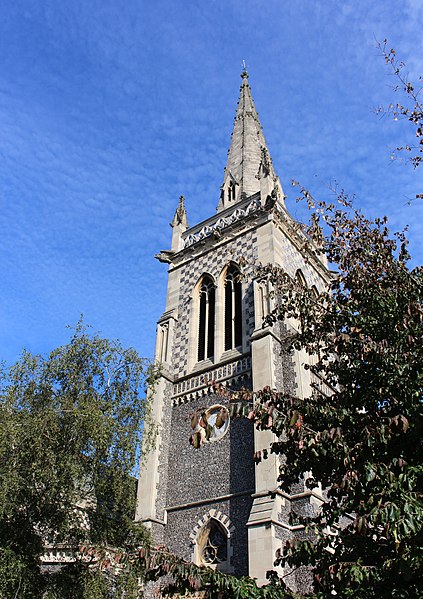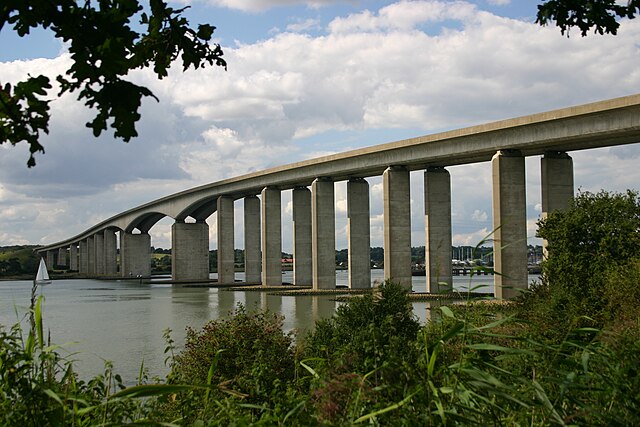Ipswich Blackfriars was a medieval religious house of Friars-preachers (Dominicans) in the town of Ipswich, Suffolk, England, founded in 1263 by King Henry III and dissolved in 1538. It was the second of the three mendicant communities established in the town, the first being the Greyfriars, a house of Franciscan Friars Minors, and the third the Ipswich Whitefriars of c. 1278–79. The Blackfriars were under the Visitation of Cambridge.
Remains of St Mary, Blackfriars, Ipswich
Site of Blackfriars (W) in relation to St Mary-at-Key (N) and St Peter's (M), after John Speed (1610). The church has already gone.
Joshua Kirby's 1748 illustration of buildings on the site of the Ipswich Blackfriars. The Priory Church, already demolished, formerly stood to the left (north) of this group.
The site of St Mary's church (looking east), which occupied the entire open space between the modern buildings: footings show the piers of the nave arcades
Ipswich is a large port town and borough in the county of Suffolk, England. Ipswich is the county town of Suffolk and is the largest settlement in the county, followed by Lowestoft and Bury St Edmunds. It is situated in East Anglia. Ipswich is the second-largest population centre in East Anglia, Norwich being the largest. It is about 80 miles (130 km) northeast of London. In 2011 it had a population of 144,957. The Ipswich built-up area is the fourth-largest in the East of England region and the 42nd-largest in England and Wales. It includes the towns and villages of Kesgrave, Woodbridge, Bramford and Martlesham Heath.
Image: Ipswich Christchurch Mansion Cropped
Image: St Mary Le Tower, Ipswich 01
Image: Clear sky afternoon on the Ipswich Waterfront
Image: Orwell Bridge








